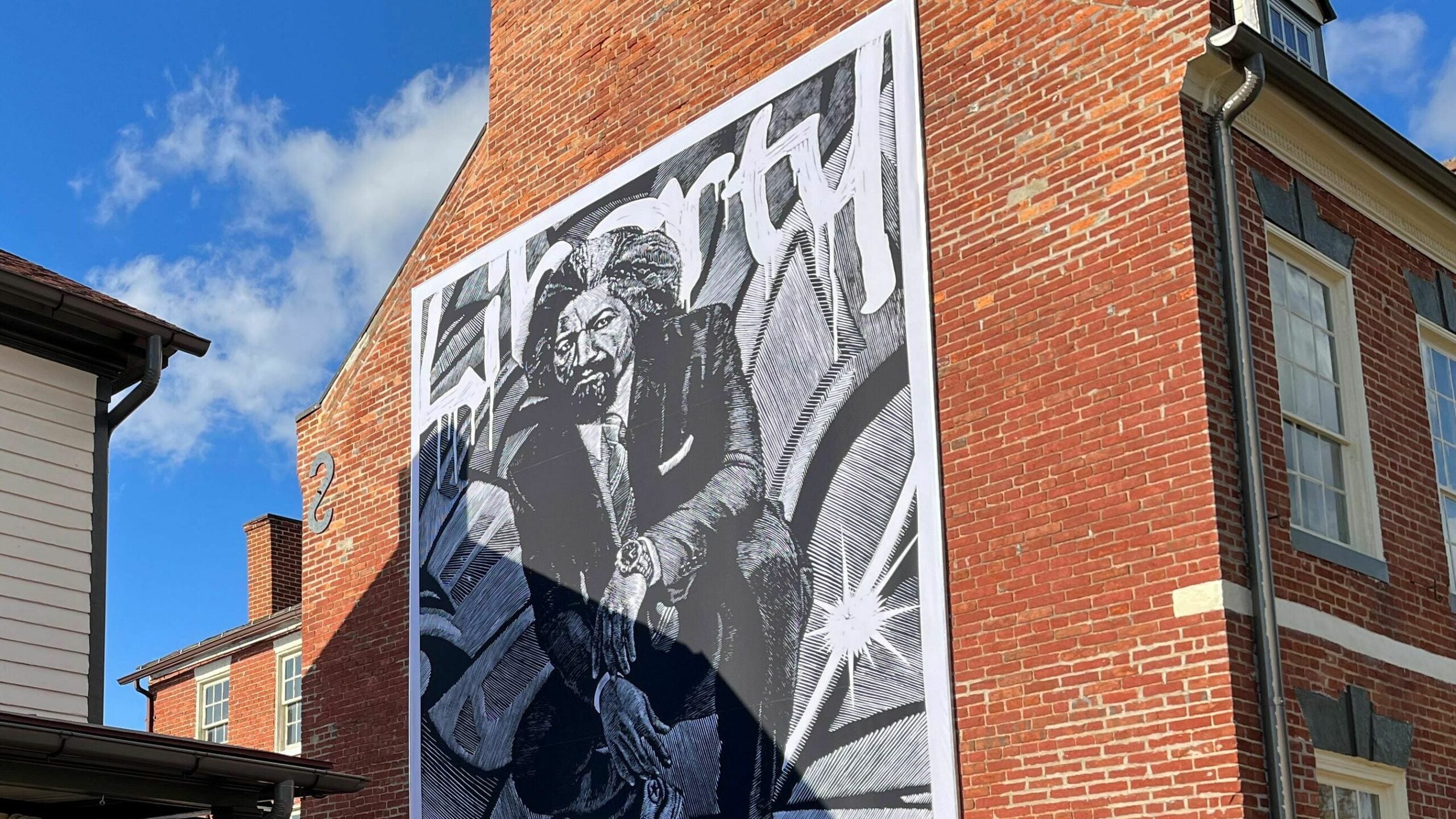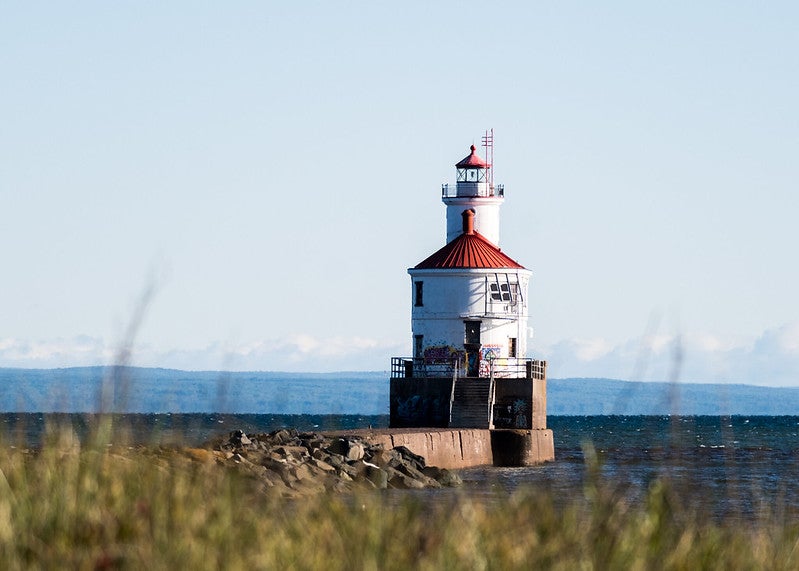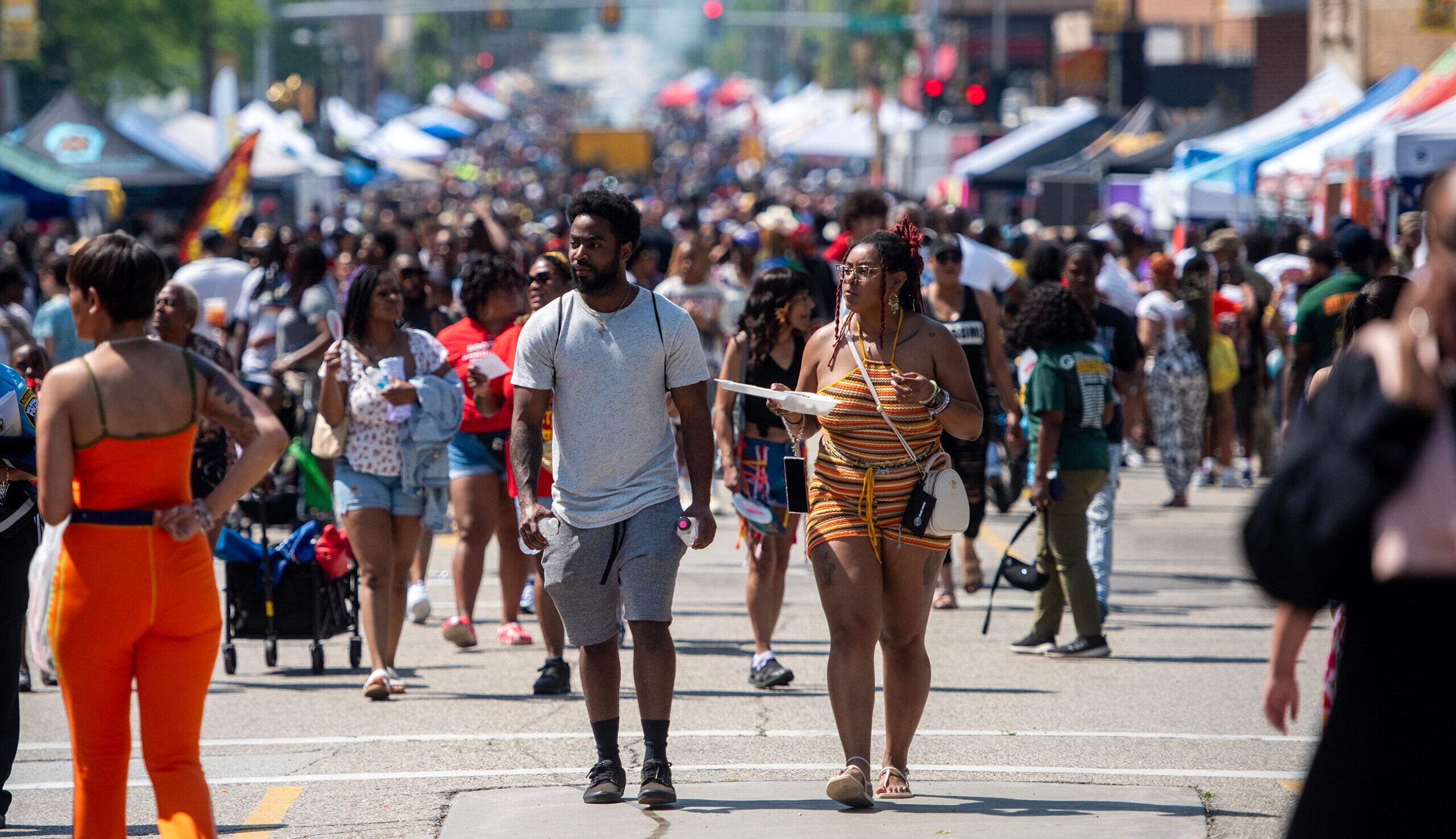A small town on Maryland’s Eastern Shore has found itself divided over a new mural depiction of the county’s most elder statesman, Frederick Douglass.
On the wall outside of the Out of the Fire restaurant in Easton, a 21-foot-tall Douglass is seen posed in a slim, European-cut suit, high-top white Converse sneakers, and an oversized wristwatch — squatting like he’s posing for Instagram.
His facial expression is the same look of defiance often captured on the 19th- century’s most photographed figure, and behind him, dripping graffiti reads the word “Liberty.”
News with a little more humanity
WPR’s “Wisconsin Today” newsletter keeps you connected to the state you love without feeling overwhelmed. No paywall. No agenda. No corporate filter.
Restaurant owner Amy Haines and her husband, Richard Marks, said they ordered the larger-than-life portrait of Douglass as a way to honor the famed abolitionist and to bring more public art to Easton.
“We always felt that the one wall, the very substantial wall on Washington Street, should have a mural, and it should be Frederick Douglass,” Marks said.
“When we came across a print that our friend sent us — a copy of Frederick Douglass in a contemporary setting — we looked at it and felt very strongly that if we were going to move forward with the mural, that would be a great image to have.”
The portrait has been up for just over a month, but already, some members of the community have spoken out against the image, including a number of Douglass’ descendants who say the portrayal is humiliating.
“Cousin Jack called me and said, ‘Have you seen that mural they got up on the wall? Got Uncle Frederick looking like a hoodlum,’ ” said Tarence Bailey, a fifth-generation descendant of Douglass.
“I called the owner of it that night and had a talk with him,” Bailey said of a conversation with Marks. “And he made comments where he said, ‘I think it reaches out to the youth.’ “
“And I said, you know, these are the same young Black boys we’re trying to get to pull up their pants. We don’t need them aspiring to something like that.”
For Bailey and others who oppose the mural, the differing opinions on the piece represent something much bigger than art.
Haines and Marks, the couple behind the mural, are both white — as is the artist who made the piece. Bailey and many of the picture’s most vocal detractors are Black.
“That mural does not look like the recorder of deeds,” Bailey said. “Does not look like a U.S. marshal. Doesn’t look like the man that fought for the rights of women and all Black folk.”
Moonyene Jackson-Amis runs Fred’s Army, an organization dedicated to Douglass’ memory. She was similarly appalled at the depiction of Douglass.
“It was a lot of work trying to get Frederick Douglass recognized in his own home, a place that he escaped from and came back a statesman. And so we want him to be seen in that light,” Jackson-Amis said.
But Adam Himoff, the artist behind the piece, said getting recognition for Douglass was part of his message.
“We live in a time when books are being banned and subject matters are being banned because they are possibly revealing the ugliness of our nation’s history,” Himoff said.
“And there is definitely a lot of ugliness in our history. And that ugliness needs a voice. Just like Frederick Douglass used his voice to speak against the institution of slavery.”
Some like what they see
Marks and Haines said they’ve spoken to members of the Bailey family and other critics.
“I’m glad we’re having dialogue about it, you know, like some honest, raw dialogue,” Haines said. “I think that’s important in the community. And I feel like with this piece, what I’ve really appreciated about it is I’ve engaged in conversations with people whose paths I probably never would have crossed.”
She said she has no plans to take down the artwork.
Outside of the restaurant recently, a number of patrons spoke highly of the piece.
“I think it’s fantastic,” said Kathy Bosin, a resident of the neighboring St. Michaels, Md.
“When I look at that image, I see the future. When I look at that image, I think that any young person I see, maybe on the street, could be the next Frederick Douglass. It reminds me that there’s leadership and new leaders everywhere, let’s hope. So I get excited about it and I feel inspired by it.”
Her husband, Kevin Garber, was similarly moved. In fact, it was Garber who first brought the artwork to Marks’ and Haines’ attention.
“So we have a little role in the mural,” Bosin said. “But the coolest part is that it’s up there in our community and hopefully shining a light.”
Joseph and Candace Barbaccia were visiting town from their home in Delaware. They stopped in at Out of the Fire and wanted to examine the mural more closely after their meal.
“A couple of things struck me about it,” Joseph said. “And that was the modernization of the figure who’s definitely usually not dressed in a watch and in a suit. That, and the forthrightness of Frederick Douglass’ stare, which is part of the photographic legacy of the man.”
Joseph, who is an artist, said it’s natural for artists to take these types of liberties on works and figures in the public domain.
In addition to the mural outside the restaurant, the couple ordered smaller prints of the image to be sold — ranging from $45-$75 — with the proceeds going to a scholarship fund in Douglass’ name.
To Bailey, the idea of the scholarship adds insult to injury.
“Whose college education did they pay for? Nobody’s. They give a few hundred dollars here to kids or whatnot to get a book or something like that or whatever. That is not a scholarship. And ask him how many Baileys have they given a scholarship to?”
In addition to potential racial divides, generationally, members of the community seem split on the piece.
At the Building African-American Minds (BAAM) Center in Easton, a group of pre-teen and teenage boys agreed that the image was “cool” — a modern take on a figure they said they did not learn much about in school.
“It’s designed and they put it in the area to where, like, it pops out. It makes the area look better,” said 12-year-old Khi’lil Jenkins.
Aven Nichols, 15, and also in the program, reacted similarly.
“I just like how it’s designed and the colors,” Nichols said. “I think it’s really nice.”
One of the adult leaders at the program, 24-year-old Xavier Rahim, said that getting a hipper, modernized portrayal of Douglass might be exactly the kind of thing that could help young people relate more to their elders.
“A lot of them don’t get taught in a memorable way about some of these historical figures,” Rahim said.
“They might not be able to relate to the statues that we have of Frederick Douglass here, so they might pay less attention to it. Whereas something as flamboyant and just as modern as what’s depicted in this new mural, it’s a lot easier for them to see that and say, okay, who is this person? They look pretty cool.”
9(MDAyMjQ1NTA4MDEyMjU5MTk3OTdlZmMzMQ004))
© Copyright 2026 by NPR. To see more, visit https://www.npr.org.9(MDAyMjQ1NTA4MDEyMjU5MTk3OTdlZmMzMQ004))





